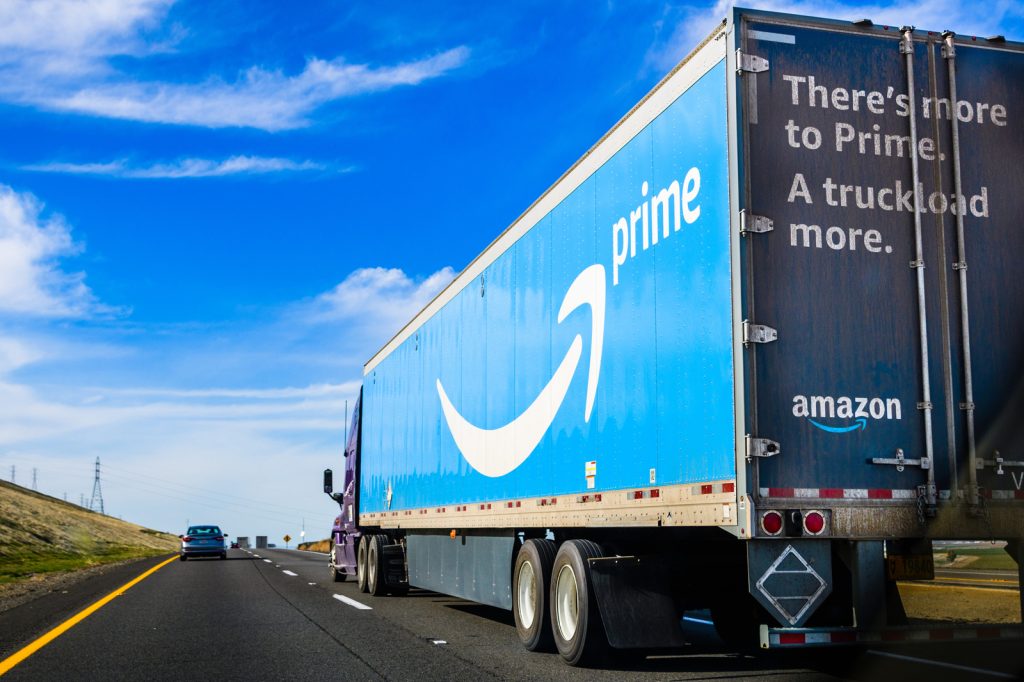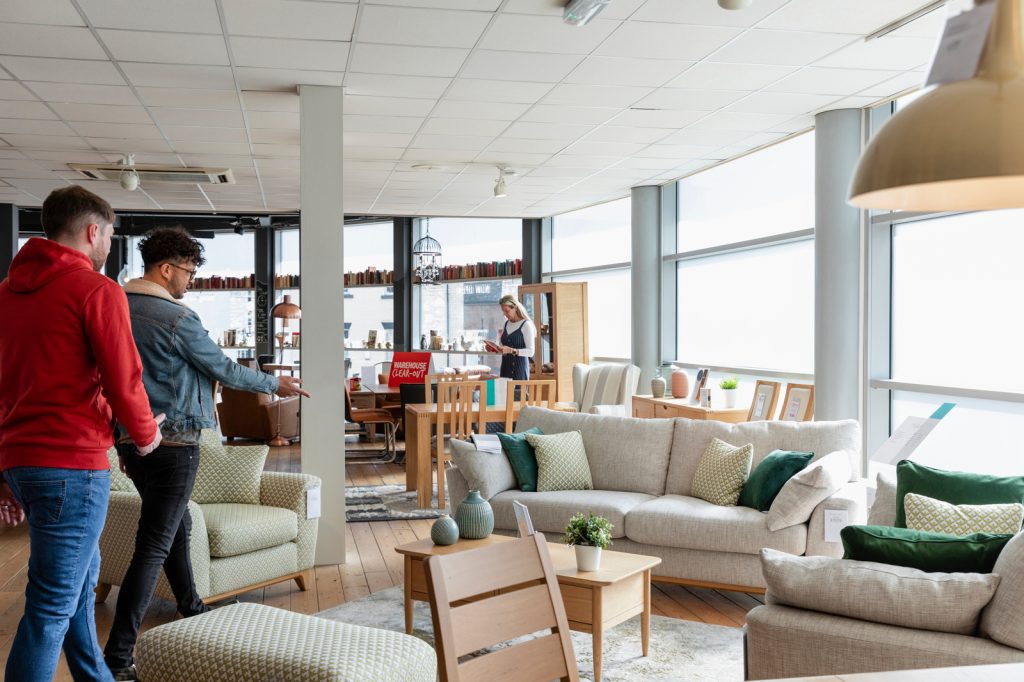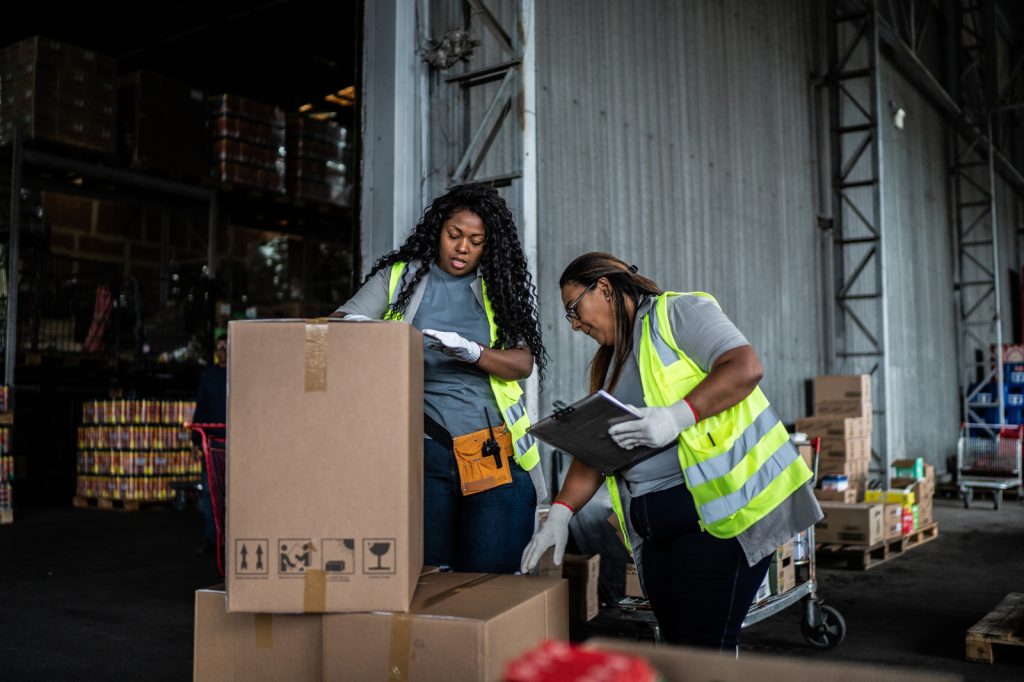 Research from assistant professor Simone Peinkofer says retailers, like Amazon, should disclose who an item is sold by and shipped by.
Research from assistant professor Simone Peinkofer says retailers, like Amazon, should disclose who an item is sold by and shipped by. 
E-commerce — the buying and selling of goods online — has evolved to become something that many of us do without a second thought. By the end of 2022, e-commerce sales hit a record high of $299.12 billion in the United States, with people shopping digitally for everything from electronics and furniture to groceries and home goods.
It has seamlessly permeated everyday life while also fundamentally changing the retail industry. For business managers, this means experimenting with new fulfillment methods and channels and constantly adapting strategies to meet ever-changing demands and shopping patterns. Of course, all of this must be done through the multilayered lens of reducing costs, improving convenience and achieving customer delight and satisfaction.
Faculty members from the Broad College of Business are working to untangle and understand these challenges and inform future strategy for businesses to succeed in this new retail reality.
Here are five things retail managers need to know about e-commerce, based on Broad research.
1. Disclose third-party products and aim for authenticity.
Shelf space in the virtual world is endless, which means retailers like Amazon or Walmart can easily offer third-party products alongside their own online. Essentially, they increase sales without having to carry inventory costs.
However, if third parties are left unchecked, this can lead online shoppers to interact with counterfeit products, and about 30% of customers actually end up buying a fake. When this happens, trust is damaged and the frustrated, confused consumer can end up blaming the retailer — which is bad for business and future sales.
slideshow has a previous and next buttons
 Research from assistant professor Simone Peinkofer says retailers, like Amazon, should disclose who an item is sold by and shipped by.
Research from assistant professor Simone Peinkofer says retailers, like Amazon, should disclose who an item is sold by and shipped by. According to research from Simone Peinkofer, assistant professor of supply chain management, published in the Production and Operations Management Journal in 2023, customers look for the listed seller of a product when attaching blame for the deception. As such, retailers should disclose this information clearly for the customer upon purchase. For example, if a pair of shoes is sold by a third party but shipped by Amazon, those details should be readily available to the customer.
“Trust is key, especially in an online shopping environment where the customer and the third-party marketplace sellers are typically not familiar with each other,” Peinkofer said. “Building and maintaining trust with their customers allows online retailers to retain customers and hence to secure future sales.”
To prevent a counterfeit product in the first place, Peinkofer and coauthor Yao “Henry” Jin, associate professor at Miami University, urge retailers to establish strict policies for working with third-party retailers to ensure that items being sold are authentic, which may include routine product checks. In addition, retailers should provide high-quality and detailed product images, descriptions and specifications to boost transparency and improve perceived quality for customers.
2. Create a stockout strategy that focuses on speed first, convenience second.
Amazon has conditioned shoppers to expect — or demand — their items arrive quickly, ideally within two days for the 112 million Amazon Prime members in the United States. The same holds true when something is out of stock: customers want a solution as fast as possible. And if a retailer can’t accommodate, 21% of customers are willing to hop to another source to find what they need and 9% buy nothing at all. These numbers worsen with each stockout a customer faces. By the third stockout, 70% of customers either switch stores or purchase nothing.
But what if there was a way to prevent customers from leaving when they encounter a stockout? Take Target, for example, where in-store employees are equipped with handheld technology to share inventory details if a customer can’t find what they need. With this strategy, the retail giant has developed a model to “save the sale,” ensuring that their customers don’t leave empty-handed. Sales associates can direct them to another store location, offer to have the item shipped to their home or show it can be ordered online.
slideshow has a previous and next buttons
 Peinkofer's research finds that customers value speed first, convenience second when encountering a stockout.
Peinkofer's research finds that customers value speed first, convenience second when encountering a stockout. “The key is to gain real-time inventory visibility via investment in technology,” Peinkofer noted. “A retailer needs to know at any given point in time where the inventory is located in their network of stores and fulfillment centers in order to provide customers with this ‘save the sale’ option.”
Her recent research, published in the Journal of Business Logistics in 2022 on the concept of saving the sale, finds that customers value speed first, convenience second. In other words, when there is a stockout, retailers should get the goods to the customers as soon as possible, and if resources won’t allow for that, at least make sure items can be delivered right to their door.
Peinkofer and her coauthors — including Terry Esper from The Ohio State University, Ronn Smith from the University of Wyoming and Brent Williams from the University of Arkansas — also noted that if retailers aren’t already developing stockout options, this is their sign to do so. For U.S. retailers, the financial impact of stockouts was estimated at $182.2 billion in 2022. Thus, having a stockout strategy offers significant financial potential and is valued by customers.
3. Don’t underestimate the power of a showroom.
Since 2010, we’ve experienced a retail apocalypse, with thousands of brick-and-mortar retail stores being forced to close their doors or downsize their store network footprints, due in part to the dramatic rise of e-commerce and the COVID-19 pandemic. However, recent research from Stanley Lim, assistant professor of supply chain management, highlights the value of having a physical showroom, even in today’s digital landscape.
“Showrooms offer a differentiating experience for customers to interact with the retailer and store employees during their buying process,” Lim said. “This helps create a better fit between product and customer preferences that not only reduces the pressure for retailers to compete on speed to fulfill showroom orders but also leads to lower return rates.”
slideshow has a previous and next buttons
 Research from Stanley Lim, assistant professor, highlights the value of having a physical showroom, even in today’s digital landscape.
Research from Stanley Lim, assistant professor, highlights the value of having a physical showroom, even in today’s digital landscape. His paper, coauthored with Fei Gao from Indiana University Bloomington and Tom Tan from Southern Methodist University, is forthcoming at Management Science. By looking at furniture retailers specifically, their findings suggest that showrooms offer the best way for customers to gain product information, as they look at, touch and experience the product before buying it (all of which aren’t possible to the same extent through e-commerce). This in turn alleviates customer uncertainty and leads to a higher likelihood of purchase — and, as the researchers found, up to 70% more profits for the retailer.
The study goes on to reveal that customers who made a showroom purchase are significantly less sensitive to longer lead times compared to other channels, like online and catalog sales — a finding that can inform retail fulfillment strategy and how retailers might prioritize limited resources.
The bottom line? Retailers that don’t currently have showrooms should consider opening them to benefit from potential profit improvements and fulfillment savings. And incentives aren’t off the table, either. Retailers can make enticing offers to encourage customers to visit their showrooms and experience their products. For example, in some locations IKEA rewards customers for traveling to its stores, giving more to customers who travel from farther distances.
Finally, for retailers who do have showrooms, prioritize filling online orders the fastest when inventory is limited as showroom shoppers will be more patient in waiting for their products.
4. Consider creative fulfillment approaches to keep costs down and convenience up.
For everyday household items like laundry detergent or dog food, some people take advantage of subscriptions, where they automatically receive replacement orders on a regular basis. Auto replenishment, on the other hand, relies on smart devices to trigger a new order. While this offers high value and convenience to the customer, retailers are left facing high delivery costs with one-off orders happening at random, unplanned times.
Research from Lim, accepted for publication at Management and Business Review, suggests a method for the grocery industry to approach auto replenishment in a way that reduces fulfilment complexity and channel management while still offering convenience to the customer.
slideshow has a previous and next buttons
 Lim's research suggests a method for the grocery industry to approach auto replenishment in a way that reduces fulfilment complexity and channel management while still offering convenience to the customer.
Lim's research suggests a method for the grocery industry to approach auto replenishment in a way that reduces fulfilment complexity and channel management while still offering convenience to the customer. “The so-called Market Basket Auto-Replenishment (or MBAR) leverages order batching across time and geography, reduced but targeted product assortment through the creation of baskets of curated and subscription products, and subscription and auto-replenishment concepts to reduce overall cost-to-serve,” Lim said.
In the study, Lim and coauthor David Pyke, from the University of San Diego, devise a model that combines elements from order batching, subscription services and auto replenishment to address disadvantages of each fulfillment model on its own.
Their idea — called a mass customized basket — would cater to a cluster of customers in a specific region, like a neighborhood. Customers would be able to choose their regularly purchased products ahead of the delivery window or simply have items selected for automatic replacement. The model would also offer a chance for customers to trial special or new products offered exclusively to them through the basket. The items would be delivered directly or available to customers for pickup weekly at a micro distribution center nearby.
With this model, grocers would be able to simplify the product categories they offer and deliver through the basket while also enjoying better demand forecasting compared to auto replenishment on its own. Topping it off, with batch orders across time and geography, product handling, shipping and transportation costs would be reduced. In a nutshell, the proposed model has the potential to achieve many of the benefits customers are looking for without creating unsustainable costs to the supply chain.
5. Return windows are not “one size fits all.”
The cost of returns in the United States is on the rise, reaching $816 billion in 2022. And return policies play a critical role in either encouraging or deterring customers from sending back products. They vary widely across retailers, and for e-commerce specifically, the lack of physical interaction leads retailers to offer more lenient return policies to stimulate demand and encourage more online shopping and spending from the consumer. This also increases the risk of abuse, resulting in large amounts of returns.
“Returns cost firms a significant fraction of an item’s selling price,” Lim said. “When a fraud return occurs, such as returning a pair of trail shoes after a camping trip, the retailer gets reduced salvage value from the item. Even if the item is returned in good resalable condition, the whole returns process will still be costly due to the required labor, transport and inspection to restock the good. Now, a 2022 report by the NRF and Appriss Retail suggests returns fraud represents about half of all return causes.”
slideshow has a previous and next buttons
 Lim has coauthored research that is the first to look at optimal return windows to deter these fraudulent returns, and the findings reveal that they’re not “one size fits all.”
Lim has coauthored research that is the first to look at optimal return windows to deter these fraudulent returns, and the findings reveal that they’re not “one size fits all.” Lim has coauthored research that is the first to examine optimal return windows to deter these fraudulent returns, and the findings reveal that they’re not “one size fits all.” As the research suggests, shorter return windows are not always the best to deter opportunistic consumers — shoppers who buy something to fill an immediate need and then return it — and setting a return window depends on what is being sold and who your customers are.
Authors M. Serkan Akturk from Clemson University, Prashant Chintapalli from Western University and Lim suggest that shorter windows only work best when the customer base is largely made of opportunistic shoppers. Shorter windows are also recommended when unit production costs are high, as profit margins are already lean, and the retailer should aim to discourage returns to maximize profits. Lim noted, “firms should also shorten their return windows when the likelihood of product matching consumers’ requirements is high, so as to limit the number of opportunistic returns.”
In general, while longer windows help increase demand, they also increase the number of returns. Consequently, retailers should offer higher discounts to clear returned products in the liquidation markets. Longer windows can also be advantageous when the retailer is able to charge a higher restocking fee, as this offers a way for customers to “buy more time.”
Across these research projects from Peinkofer, Lim and others, Broad faculty continue to weigh in on relevant issues and make an impact for business leaders today and tomorrow.
Media Contact:
- Chelsea Stein
- Associate Director, Content Strategy, Broad College of Business
- steinche@broad.msu.edu
- (517) 353-0540
In Other News:




